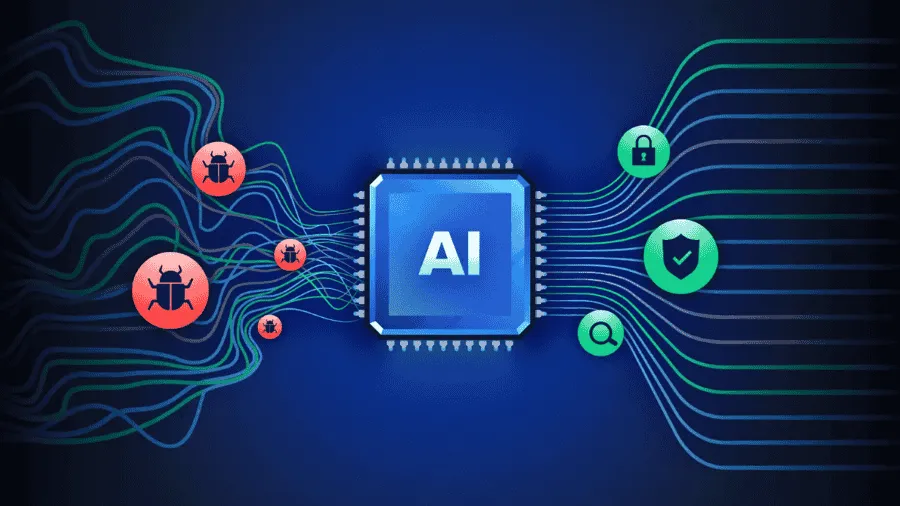Best Open Source AI Models : The Ultimate Guide
Generative AI models have evolved significantly since their launch two years ago. This technology has become an integral part of developing applications that enable the creation of text, images, and other media with remarkable accuracy and creativity. However, with the increase in these innovations, open-source AI models have become a preferred option for developers, researchers, and organizations looking to leverage advanced technology without incurring hefty licensing fees or restrictive commercial policies. In this article, we will explore the differences between open-source AI models and closed models, review the most important open-source models, and discuss how to choose the best model for your needs.
Differences Between Open Source and Closed Models
Open-source models offer numerous advantages, including:
- Customization: Models can be modified to meet specific needs.
- Transparency: Open access to the code allows for understanding how the model works.
- Community Innovation: Continuous development is supported by a global community of developers.
Conversely, closed models are more suitable for industries that require:
- Regulatory Compliance: Such as healthcare and financial services.
- Security: They provide robust solutions for protecting sensitive data.
- Specialized Technical Support: Including industry-targeted updates and improvements.
Nevertheless, open models are an ideal choice for many applications that do not require strict limitations.
read also: Top AI Chatbots for 2024
Definition of Open Source AI
Recently, the Open Source Initiative (OSI) provided an official definition of open-source AI, known as OSAID. To be compliant with OSAID, models must be:
- Fully Transparent: In terms of their design and training data.
- Reproducible: Users should be able to reproduce and use them freely.
- Open for Development: Allow modifications and use for commercial and non-commercial purposes.
Examples of OSAID Compliant and Non-Compliant Models
- Compliant Models:
- Pythia (EleutherAI)
- T5 (Google)
- OLMo (Allen AI)
- Non-Compliant Models:
- LLaMA (Meta)
- Stable Diffusion (Stability AI)
Non-compliant models often face restrictions related to licensing or transparency in training data.
Requirements for Running Open Source AI Models
Running these models requires specific setups, including:
- Hardware:
- Graphics Processing Units (GPUs) such as Nvidia A100 or H100 for running large models.
- Software:
- Python: The primary language for configuring models.
- Libraries like PyTorch and TensorFlow for training and executing models.
- Specialized tools such as Hugging Face Transformers and Nvidia NeMo to streamline processes.
- Virtual Environments:
- Docker: To ensure compatibility across different systems.
- Ollama: For running models locally on compatible systems.
How to Choose the Right Model
Choosing a model depends on several factors, including:
- Licensing Requirements: Do you need a model for commercial use?
- Required Performance: Larger models provide higher accuracy but require more resources.
- Specific Application: Such as text generation, image processing, or audio.
Classification of Open Source Models
1. Text Models
These models are used in applications such as text generation, translation, and summarization.
- Notable Examples:
- T5 (Google): A high-performance model compliant with OSAID.
- GPT-NeoX (EleutherAI): Ideal for large-scale text generation.
2. Image Models
Used for generating images from text or enhancing image quality.
- Examples:
- Stable Diffusion (Stability AI): Flexible and high-quality.
- DeepFloyd IF: Produces realistic images with deep understanding of texts.
read also: Five Ways Artificial Intelligence Was Used in 2024
3. Audio Models
Used in speech recognition, text-to-speech conversion, and music composition.
- Examples:
- Mozilla DeepSpeech: High-accuracy text-to-speech conversion.
- Meta AudioGen: Generates sound effects based on texts.
4. Multimedia Models
These combine text, images, and audio to provide comprehensive content.
- Examples:
- OpenAI CLIP: Understands texts and images together.
- Meta SeamlessM4T: Provides multilingual translation and text services.

AI Models
Advantages of Supporting Open Source Models
- Customization Potential: Developers can modify models to meet their needs.
- Free Access: Breaks down barriers for small organizations and researchers.
- Community Collaboration: Enables faster and more efficient model development.
Conclusion
Open-source AI Models represent the future of artificial intelligence by making advanced technology accessible to everyone. By supporting open communities, we can foster innovation and ensure the development of ethical and sustainable AI Models.
Whether you are a developer or an organization, choosing open-source AI Models opens new horizons for development and creativity. The adoption of these AI Models empowers users to collaborate, customize, and innovate in ways that proprietary systems cannot match.
read also:







